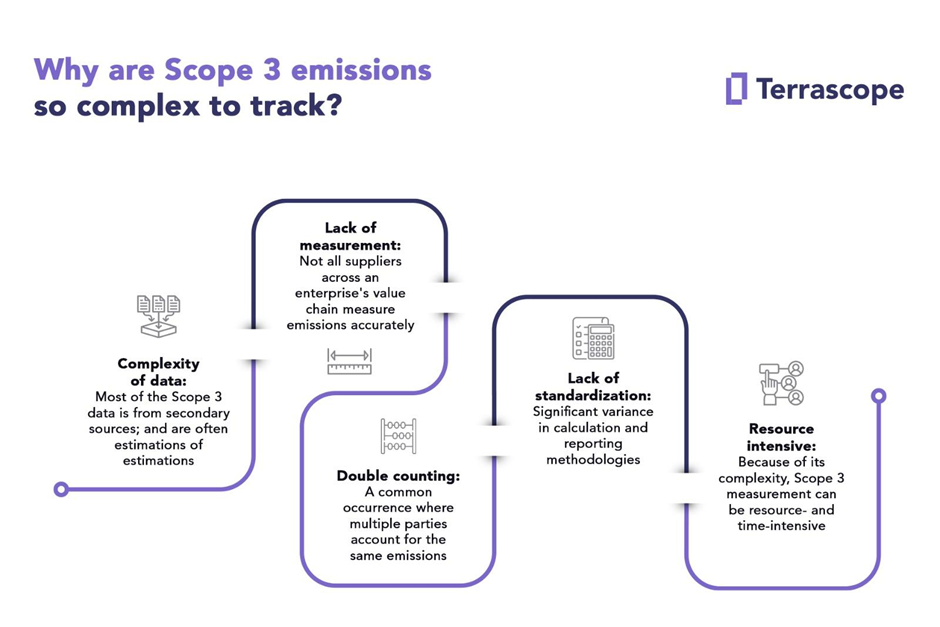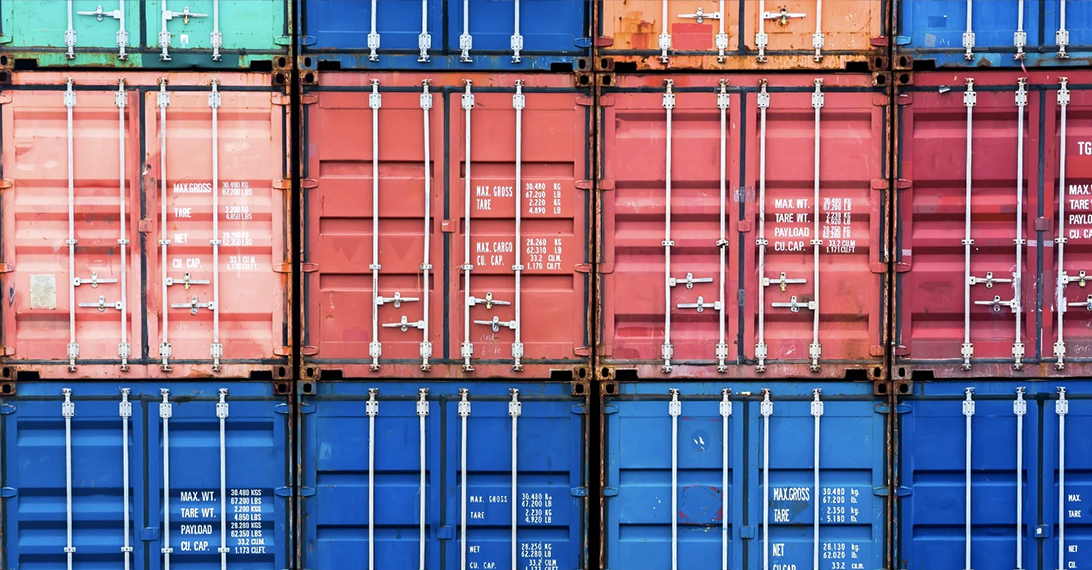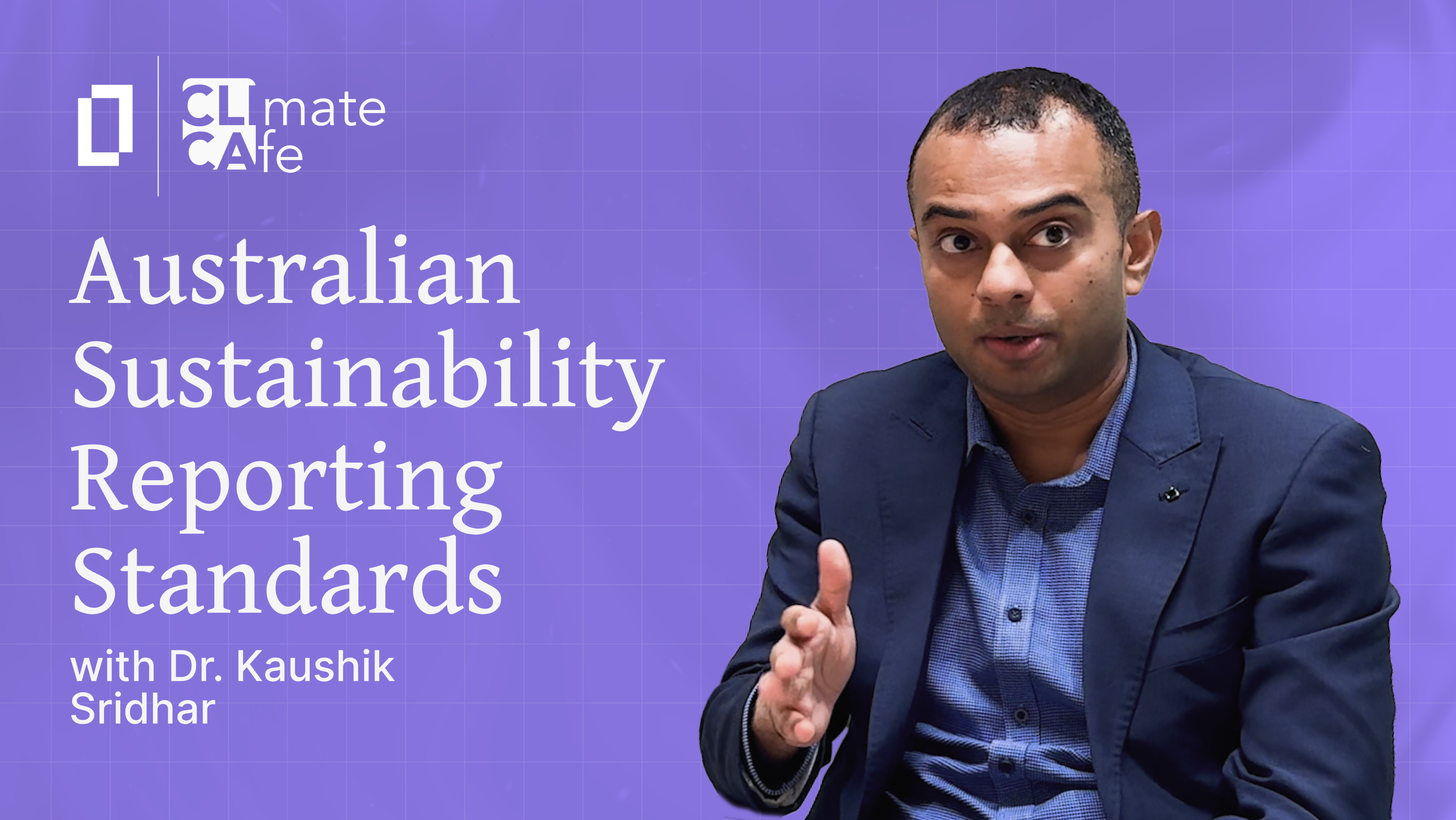Summary
- Scope 3 emissions often represent the majority of total company emissions, yet only less than 10% of companies accurately measure them.
- Scope 3 emissions measurement is crucial for effective carbon management and achieving net-zero goals.
- Accurate measurement of Scope 3 emissions is essential but challenging, often relying on proxies and industry averages, which can lead to inaccuracies without proper tools.
Introduction
Scope 3 emissions account for almost 85% of an enterprise’s emissions*. It is critical for businesses to accurately measure their Scope 3 emissions if they seek to decarbonise.
Scope 3 emissions are outside a company’s direct control and are typically spread out across its value chain. Most Scope 3 emissions stem from primary suppliers. However, enterprises with large value chains may encounter a long tail of emissions beyond their primary suppliers, making it complex to track these emissions.
The Greenhouse Gas (GHG) Protocol allows companies to use industry averages, proxies, and other sources to calculate emissions. However, the carbon measurement and management process can be complex, time-consuming, and unreliable if companies don’t have the right resources and tools.
Why Scope 3 emissions are important
Companies must pay attention to their Scope 3 emissions for several reasons.
Identify the largest source of emissions
According to the Carbon Disclosure Project (CDP), Scope 3 emissions can make up more than 75% or more of a company's greenhouse gas (GHG) emissions, and can reach close to 100% for certain industries such as financial services.
Manage risks
Tracking Scope 3 emissions helps companies identify vulnerabilities in their value chain to changing regulations, such as mandatory disclosures, carbon pricing, and taxation.
Build consumer trust
The increasingly eco-conscious consumer market demands more sustainable products. By reducing Scope 3 emissions, companies can significantly lower their carbon footprint and build stronger trust with their customers.
Meet investor expectations
Investors are setting their own reduction targets and increasingly looking at an enterprise’s sustainability practices before making an investment.
Comply with regulations
Disclosure of Scope 3 emissions is mandatory under regulations such as the Task Force on Climate-related Financial Disclosures (TCFD). The Singapore Exchange Regulation has made it mandatory for companies in key sectors to make climate-related disclosures from January 1, 2023.

The data problem in Scope 3 emissions
Measurement inaccuracy is one of the biggest challenges in carbon management and accounting today. According to a report from the Boston Consulting Group (BCG), less than 10% of companies accurately and comprehensively measure their Scope 3 emissions.
One of the main reasons for this is poor data quality. Companies must rely on data shared by their supply chain partners or third-party data (such as industry averages, statistics released by governments, or regulatory disclosures) to make estimations.
Collecting accurate data from multiple suppliers across the supply chain poses several challenges.
- Data complexity and quality: Inaccurate data or estimations by supply chain partners can completely throw off a large enterprise’s Scope 3 emission calculations. An example of this is a food processing enterprise that sources farm produce from a group of farmers. In turn, the farmers use fertilisers to grow their crops. Finally, the fertiliser company uses raw materials to manufacture the product. Emissions occur across this value chain – delivering raw material to the manufacturer, finished product to the farmers, and then the produce to the food processor. Transportation is one of many examples of indirect GHG emissions across value chains. Each partner in the chain bases their calculations on estimations (emission factors, industry averages, fuel-based or spend-based calculations). Such estimations of estimations can make data extremely complex in large value chains.
- Lack of measurement: Many suppliers do not measure their emissions. Those who do measure, may not be open to sharing data due to confidentiality or contractual issues. Additionally, suppliers may share data in non-standardised ways, preventing partnering companies from drawing meaningful conclusions.
- Lack of standard disclosure formats: The GHG Protocol provides guidelines on calculating Scope 3 emissions and the CDP provides templates for disclosure. However, there is significant variance in the methodologies and metrics that companies use to measure Scope 3 emissions.
- Scope 3 measurement is complex and resource-intensive: The calculation of Scope 3 emissions requires personnel, resources, expertise, and efficient data management processes, which can be difficult to align across a company’s supply chain.
How can carbon measurement technology help companies?
Carbon measurement technology can play a critical role in helping companies decarbonise.
By using technology platforms such as Terrascope, companies can:
- Get a single view of data from multiple sources across their value chain, both primary and third-party, to measure emissions with confidence.
- Set accurate baselines and reduction targets, identify hotspots and make informed decisions on managing emissions.
- Slice and dice data by a variety of parameters (partner, location, category, etc.) and view it in a dashboard of visualisations and analytics.
- Collaborate seamlessly with partners and suppliers, support them in their reduction initiatives, and track their progress.
- Generate auditable reports required by regulators that are compliant with existing disclosure norms.
- Track reduction efforts against industry benchmarks and regulatory mandates.
How can Terrascope help?
Terrascope enables organisations to track and measure emissions across their value chain and all GHG categories. The SaaS-based platform helps large enterprises make data-driven decisions, set realistic reduction goals, and start the journey to net zero with confidence. Get in touch with our emissions measurement expert now.



